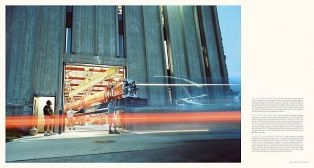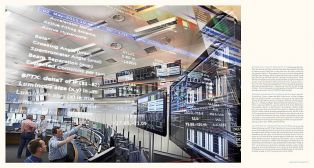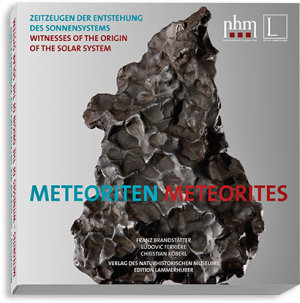Description
Large Hadron Collider is the name of the machine that will make it possible for scientists to gain insight into the beginning of our universe: a tremendous underground particle physics experiment, incredibly precise, complex and gigantic.
Jointly with Rolf-Dieter Heuer, director general of the CERN, Peter Ginter, one of the world’s best photographers, and acclaimed author Franzobel deal with the largest and most complex machine ever invented by mankind: the „world machine“, the most exciting scientific adventure ever.
What do we know about reality? Is it just a big front, veneer? Might the scenes of our existence hide scaffolds, wire frames, storage disks, and atomic bonds?
A man once asked Pablo Picasso why he painted people in such a strange way, with three eyes and two noses, and in proof of reality, he showed the artist a photo of his wife. Picasso replied that he was quite amazed seeing such a nice man paired with such a peculiar woman: small like a garlic clove, black and white, flat like a lettuce leaf, and without womb? This left the questioner open-mouthed. Reality is more than can be contained in our small conscience, where there is no room for a boundless universe, yet provided with borders, or for the big bang. Art wants to enlarge our conscience and make room for new things that are just being investigated by science. Like Paul Klee once said, art does not render the visible, but makes visible. This also applies to science, and in particular to basic research: it steps well beyond the visible.
Sometimes scientific visions open up new artistic forms, and sometimes it is the other way round. But in any case, both art and science follow similar visions, leaving the beaten tracks of thinking and perception, to conquer new ground by imagination and creativity. Both risk wrong tracks in their ambition to find cuts and new land – a rough ride for both of them, questioning the tried and trusted and turning the traditional upside down. But then, it is art and science that make mankind advance.
This book wants to be a balancing act between the two disciplines. On the one hand, it is meant to get the readers enthusiastic about the wonderful world of particle physics and to familiarise them with the LHC, and on the other hand, it is meant to be a work of art. It is a photo documentation of one of the world’s most fascinating machines and also a literary approach to the most exciting topics of our time. For 15 years, Peter Ginter has interpreted the LHC with the means of photography, thus creating an impressive tribute to research. Author Franzobel has transposed the LHC into his own language, and Barbara Warmbein from the CERN press office has contributed the captions. Many other CERN collaborators contributed to the completion of this extraordinary project.
In the end, this unique book will be what you will make of it, dear reader. May it be inspiring, fascinating, and enjoyable, and may it produce your personal big bang! Rolf-Dieter Heuer, Director General, CERN

























